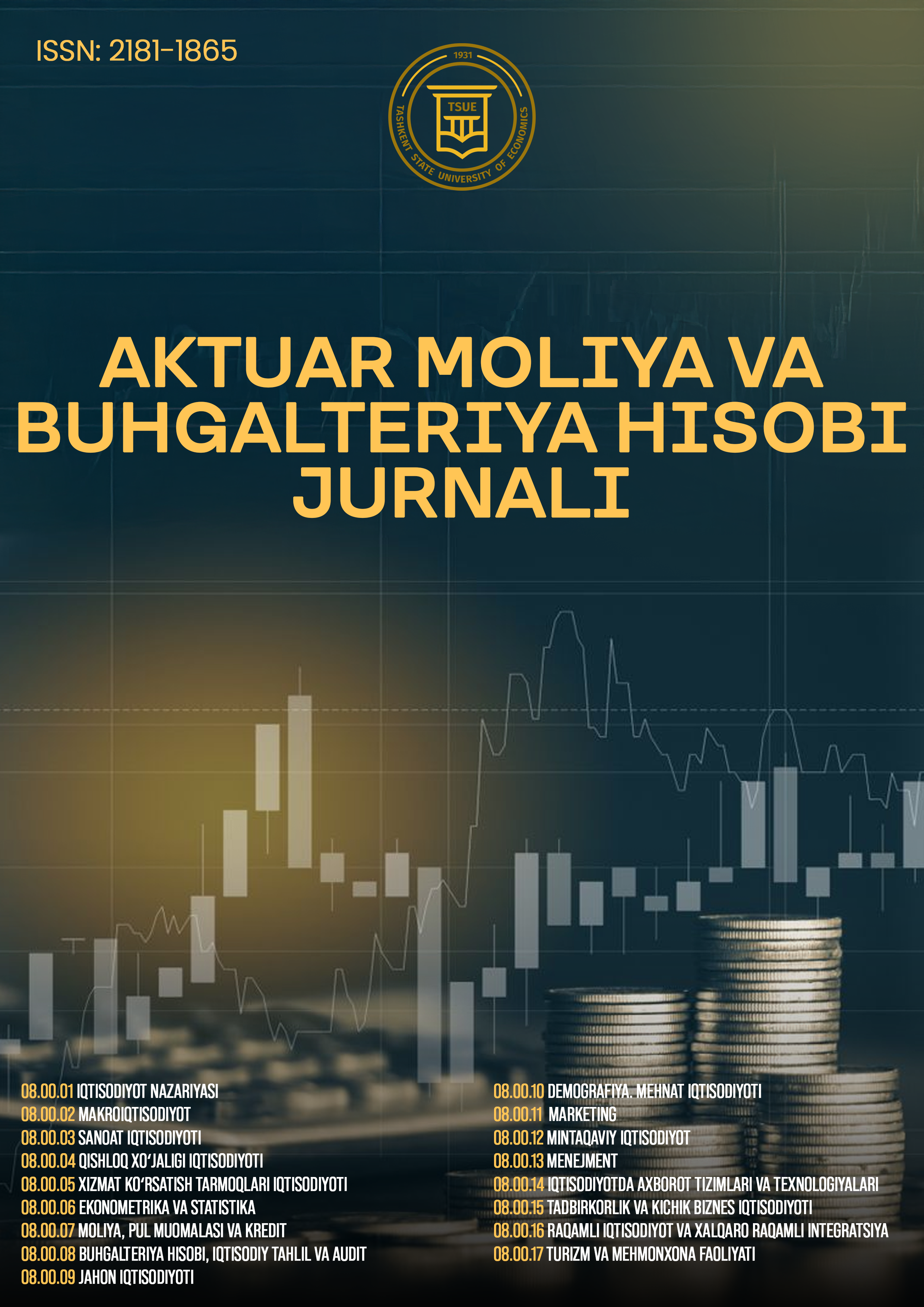NAVIGATING FINANCIAL DISTRESS: INSIGHTS INTO BANK INSOLVENCY RISKS IN UZBEKISTAN
Keywords:
Bank insolvency, financial stability, liquidity, non-performing loans, liquidity coverage ratio, capital adequacy ratio, CAMELS model, credit risk, leverage ratio, risk-weighted assets.Abstract
Bank insolvency poses significant risks to financial systems, due to its potential ripple effects, systemic risks on national and global economies. This study investigates the key factors contributing to bank insolvency and applies CAMELS model to evaluate the factors such as macroeconomic and microeconomic risks, non-performing loans (NPLs) and liquidity constraints, which heighten insolvency risks. A comparative analysis of Uzbekistan’s banking sector and international cases clearly reveals critical vulnerabilities linked to asset quality, liquidity management, and regulatory gaps. Analyzing recent bank insolvencies, identifying weaknesses, as well as, making comparisons between international and local industries might help to strengthen financial stability and mitigate future risks.
References
Buckingham, S., Atanasova, S., Frazzani, S., & Véron, N. (2019). Study on the differences between bank insolvency laws and on their potential harmonisation. Publications Office of the European Union.
Burkhanov, A.U., Kurbonbekova, M.T., Usmonov, B. (2024). Impact of Money Supply on Inflation in Uzbekistan—VAR Approach. In: Sergi, B.S., Popkova, E.G., Ostrovskaya, A.A., Chursin, A.A., Ragulina, Y.V. (eds) Ecological Footprint of the Modern Economy and the Ways to Reduce It. Advances in Science, Technology & Innovation. Springer, Cham. https://doi.org/10.1007/978-3-031-49711-7_75
Goodhart, C. (2008). Liquidity risk management. Banque de France Financial Stability Review, 11(6), 39-44.
Ryan-Collins, J., Greenham, T., Werner, R., & Jackson, A. (2012). Where does money come from. A guide to the UK monetary and banking system, 2.
Dang, U. (2011). The CAMEL rating system in banking supervision. A case study.
Usmonov, B., Tojiboeva, S., Tashbaev, B., Omanov, S. (2023). Evaluation of Capital Efficiency of Companies in the Analysis of Financial Potential (In the Case of Uzbekistan). In: Popkova, E.G., Sergi, B.S. (eds) ESG Management of the Development of the Green Economy in Central Asia. Environmental Footprints and Eco-design of Products and Processes. Springer, Cham. https://doi.org/10.1007/978-3-031-46525-3_48
Caprio, G., & Klingebiel, D. (1996, April). Bank insolvency: bad luck, bad policy, or bad banking?. In Annual World Bank conference on development economics (Vol. 79, pp. 1-26).
Finalising Basel III – in brief. https://www.bis.org/bcbs/publ/d424_inbrief.pdf
Usmonov, B. (2023). Theory and practice of evaluation of capital assets in Uzbekistan. YASHIL IQTISODIYOT VA TARAQQIYOT, 1(11-12).
www.ceicdata.com Federal Reserve Board
Ari, A., Chen, S., & Ratnovski, L. (2021). The dynamics of non-performing loans during banking crises: A new database with post-COVID-19 implications. Journal of Banking & Finance, 133, 106140.
Correia, S., Luck, S., & Verner, E. (2023). Failing Banks. Available at SSRN 4650834.
Молиявий барқарорлик шарҳи 2024 йил I ярим йиллик. Ўзбекистон Республикаси Марказий банки


